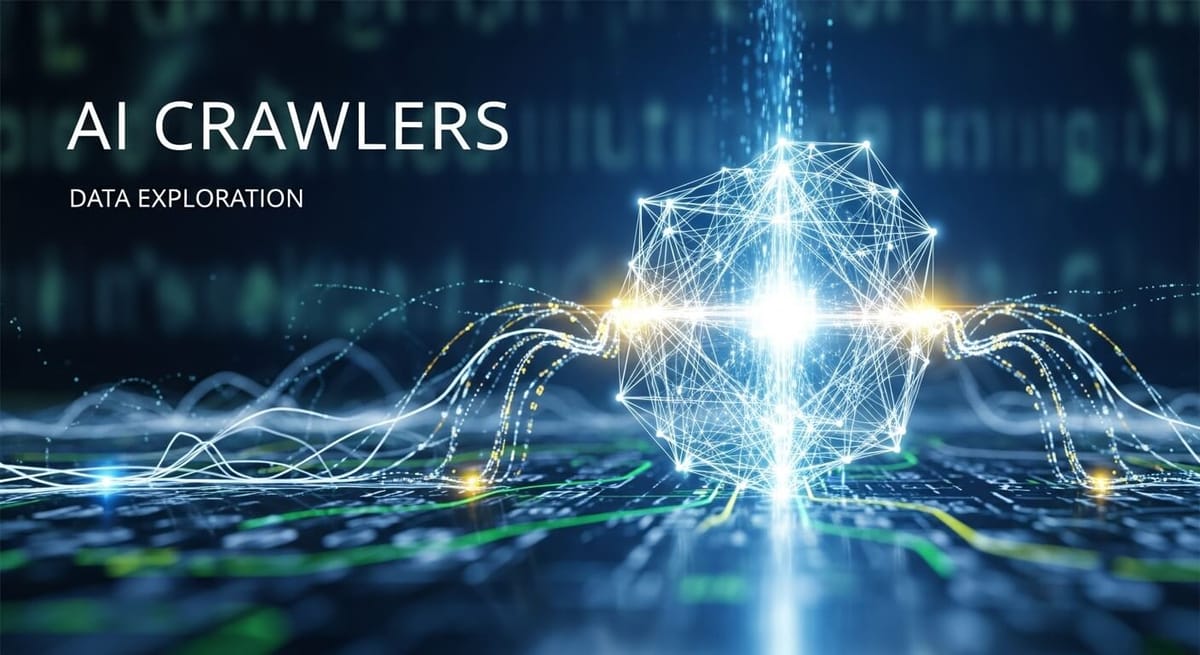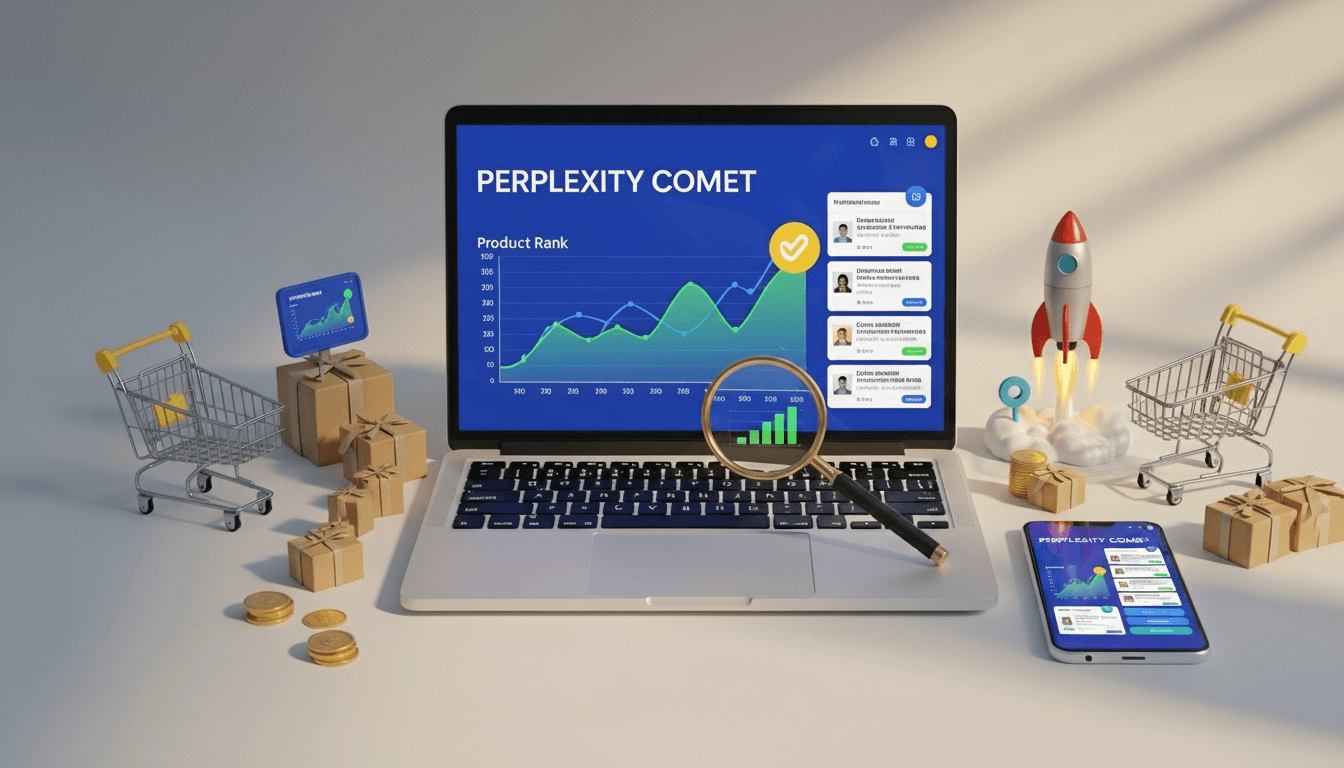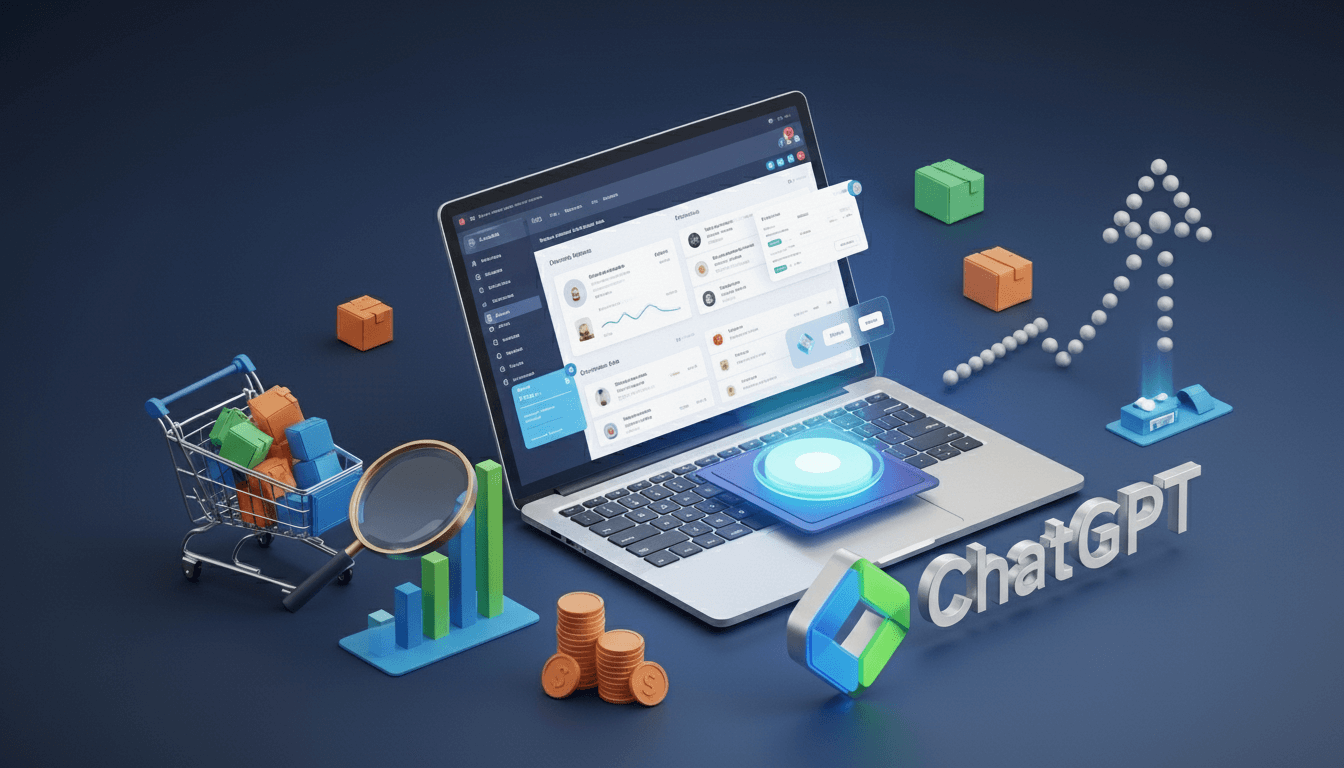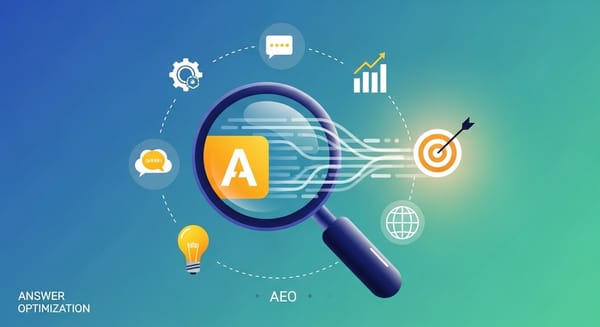AI Crawlers for E-commerce | Get Products Found in ChatGPT & AI Search 2025

AI crawlers from ChatGPT, Perplexity, Claude, and Google are scanning your online store right now but most e-commerce sites aren't optimized for them. Unlike traditional Googlebot, AI crawlers need specific optimization to understand product catalogs.
This guide explains how AI crawlers work, why they matter for product discovery, and how to ensure your products get indexed and recommended by AI platforms.
The E-commerce AI Revolution: Why This Matters Now
The way shoppers discover products has fundamentally changed:
Traditional Product Discovery (2023):
- Shopper searches Google: "best standing desk"
- Clicks through to stores, compares products
- Your SEO determines visibility
AI-Powered Product Discovery (2025):
- Shopper asks ChatGPT: "What's the best standing desk for back pain under $500?"
- AI recommends 3-5 specific products with store links
- AI crawler indexing determines whether your products appear
The Critical Shift:
- 67% of online shoppers now use AI assistants to research products
- AI-referred traffic converts 3.5x higher than traditional search
- Products NOT indexed by AI crawlers are invisible to this growing segment
- Zero-click product discovery: AI gives answers without sending shoppers to Google
The Problem for Most Online Stores:
Your Shopify or WooCommerce store was optimized for Googlebot, not AI crawlers. These new bots work differently, index differently, and require different optimization strategies. If AI crawlers can't properly index your product catalog, you're losing sales to competitors who've adapted.
What Are E-Commerce AI Crawlers?
AI crawlers are specialized web robots operated by AI platforms (OpenAI, Anthropic, Google, Perplexity) that scan online stores to:
- Index product catalogs for AI recommendation engines
- Extract product data (descriptions, prices, specs, availability)
- Understand shopping context to match products with shopper queries
- Update product information in real-time for AI responses
Critical Difference from Traditional Crawlers:
| Googlebot (Traditional) | AI Crawlers (ChatGPT, Claude,Perplexity) |
|---|---|
| Indexes for search rankings | Indexes for product recommendations |
| Follows site structure broadly | Targets product data specifically |
| Uses PageRank signals | Uses semantic product understanding |
| Updates periodically | Updates for real-time AI responses |
| Optimized for SEO | Requires structured product data |
Why This Matters for Your Store:
A product that ranks #1 on Google might be completely invisible to ChatGPT if AI crawlers can't properly index your product data. You need BOTH optimizations.
What are the Types of AI Crawlers: What's Scanning Your Store
AI crawlers fall into three categories, each affecting your e-commerce visibility differently:
1. Training Bots (Bulk Product Data Collection)
These crawlers collect large datasets to train AI models on products, categories, and shopping patterns.
| Crawler | Operated By | E-Commerce Impact |
|---|---|---|
| GPTBot | OpenAI (ChatGPT) | High - Powers ChatGPT product recommendations |
| ClaudeBot | Anthropic (Claude) | Growing - Claude's shopping features expanding |
| Google-Extended | Google (Gemini) | Critical - Feeds Google AI Overview product results |
| CCBot | Common Crawl | Medium - Trains multiple AI platforms |
| Meta-ExternalAgent | Meta | Emerging - Powers Meta AI shopping features |
For Online Retailers: These bots determine whether AI platforms "know" your products exist and can recommend them to shoppers.
2. Indexing Bots (Real-Time Product Discovery)
These crawlers actively index products for immediate AI search responses.
| Crawler | Operated By | E-Commerce Impact |
|---|---|---|
| OAI-SearchBot | OpenAI | High - Powers ChatGPT's shopping mode |
| PerplexityBot | Perplexity | High - Strong shopping query focus |
| YouBot | You.com | Medium - Shopping features growing |
| Googlebot-AI | Critical - Indexes for AI Overview shopping |
For Online Retailers: These determine real-time product availability, pricing, and whether your store appears in AI shopping results.
3. On-Demand Fetchers (Live Product Requests)
These crawlers fetch specific product pages when shoppers ask AI about products.
| Crawler | Operated By | E-Commerce Impact |
|---|---|---|
| ChatGPT-User | OpenAI | High - Retrieves live product data for recommendations |
| Claude-Web | Anthropic | Growing - Fetches product details for shopping queries |
| Anthropic-AI | Anthropic | Growing - Powers Claude shopping features |
For Online Retailers: These ensure AI platforms show current prices, availability, and accurate product information to shoppers.
If you're interested in LLMs, you can find out how do LLMs work?
AI Crawler Activity: The Numbers for E-commerce
Real Traffic Volume (One Month Across Major Networks):
- GPTBot: 569 million requests
- ClaudeBot: 370 million requests
- Combined AI Crawlers: 28% of Googlebot's total volume
What This Means for Your Store:
AI crawlers are generating MASSIVE traffic to e-commerce sites. If you're not monitoring and optimizing for them, you're missing critical insights about:
- Which products AI platforms are indexing
- How often they update your product data
- Whether they're encountering errors on product pages
- Which competitors' products they're indexing more successfully
E-commerce-Specific Crawler Behavior:
- 404 Error Rate: AI crawlers hit 34% error rates (vs. Googlebot's 8.22%), often trying outdated product URLs
- Product Page Priority: AI crawlers heavily focus on product detail pages over category pages
- Image Indexing: Strong focus on product images for visual search recommendations
- Structured Data Dependency: AI crawlers rely heavily on product schema markup
How AI Crawlers Work: Advanced Methodology
AI crawlers employ sophisticated techniques, distinguishing them from traditional crawlers through targeted indexing, advanced data analysis, and nuanced interactions with modern web architectures.
1. Advanced Data Processing and Analysis
AI crawlers surpass traditional keyword matching and link-following with advanced capabilities:
- Machine Learning and NLP: Using machine learning (ML), semantic analysis, and natural language processing (NLP), they interpret context, sentiment, and complex relationships within content, enabling richer data insights.
- Adaptive Learning: AI crawlers dynamically adapt to new content formats and website architecture changes, reducing manual updates.
- Diverse Content Types: They process a wide range of data, including HTML, images, JavaScript files (as raw text), JSON, and non-HTML content like Delayed React Server Components.
2. The JavaScript Rendering Divide
AI crawlers differ significantly in handling dynamic content:
- Traditional Limitation: Traditional crawlers struggle with JavaScript-heavy, client-side rendered pages, focusing primarily on static content.
- AI Crawler Capabilities: Most major AI crawlers (e.g., GPTBot, ClaudeBot, OAI-SearchBot, ChatGPT-User, Bytespider, PerplexityBot) do not execute JavaScript, retrieving files but missing client-side rendered content. Exceptions include Google’s Gemini, which leverages Googlebot’s infrastructure, and AppleBot, both supporting full JavaScript rendering via browser-based crawlers.
- Implication for Site Owners: To ensure visibility, critical content should use server-side rendering (SSR), Incremental Static Regeneration (ISR), or Static Site Generation (SSG).
3. Efficiency and Identification
AI crawlers exhibit distinct operational traits:
- Inefficiency: Compared to Googlebot’s 8.22% 404 error rate, AI crawlers like ChatGPT and ClaudeBot encounter 404 errors approximately 34% of the time and often follow redirects, indicating less optimized strategies.
- Identification: Crawlers use unique User-Agent strings (e.g., "GPTBot/1.0") for identification.
- Compliance: Most AI crawlers respect robots.txt directives, which specify access rules. However, some aggressive bots, like ByteDance’s Bytespider, may occasionally disregard these rules.
Implications and Management for Website Owners
The rise of AI crawlers presents opportunities and challenges for content creators, webmasters, and e-commerce businesses.
Challenges: Traffic, Revenue, and Ethics
- Monetization Risk ("Zero-Click"): AI-generated summaries deliver answers directly, bypassing source websites and threatening ad revenue. E-commerce businesses face heightened risks as AI-driven product recommendations may divert traffic, impacting product discovery and sales conversions.
- Server Strain: Intense crawler activity can overload servers, causing performance issues or outages.
- Content Control and Misrepresentation: Bulk data collection raises ethical concerns about data ownership, unauthorized use, and potential misrepresentation in AI outputs.
- Legal Ambiguity: The legality of using scraped data for AI training remains unresolved, with ongoing debates over fair use and copyright.
Management and Optimization Strategies
Website owners can implement strategic measures to manage AI crawlers effectively:
- Controlling Access via robots.txt: Use specific User-Agent rules in robots.txt (e.g., User-agent: GPTBot / Disallow: /) to allow or block crawlers from accessing parts or all of a domain.
- Implementing Security Measures: For non-compliant bots, deploy Web Application Firewalls (WAFs) or server-level IP blocking to regulate traffic and ensure server stability.
- Optimizing Content for AI:
- Prioritize server-side rendering (SSR) to ensure content accessibility for non-JavaScript-rendering crawlers.
- Use structured formatting (e.g., bulleted lists, schema markup) to enhance content digestibility for AI models.
- Maintain clean URL management with proper redirects and updated sitemaps to minimize 404 errors.
- Leverage AI Optimization Platforms: E-commerce businesses can use platforms like Answee to optimize product listings for AI answer engines, ensuring prominence in responses from ChatGPT, Claude, and Gemini, while enhancing product visibility and competitive positioning.
- Maintaining Brand Control: Blocking all AI crawlers risks models learning about your brand from third-party sources, potentially leading to misrepresentation. Contribute contextually relevant content to shape your brand’s narrative. For e-commerce, platforms like Answee enable precise product visibility management across AI platforms, ensuring accurate representation and maximizing discovery opportunities.
- Data Protection: Use the data-nosnippet meta tag to prevent search engines from displaying specific content snippets, safeguarding against misuse.
E-commerce Optimization Strategies for AI Crawlers
Strategy #1: Ensure Crawler Accessibility
Server-Side Rendering for Products:
- Use Shopify themes with SSR support
- For WooCommerce, ensure critical product data loads server-side
- Avoid JavaScript-only product displays
- Test with JavaScript disabled
Clean Product URLs:
- Use descriptive product URLs:
/products/wireless-headphones-noise-cancelling-bluetooth - Avoid parameter-heavy URLs:
/p?id=12847&cat=electronics&v=blue - Implement proper 301 redirects for discontinued products
- Keep URL structure consistent
robots.txt Configuration:
# Allow AI crawlers to index products
User-agent: GPTBot
Allow: /products/
Allow: /collections/
Disallow: /cart/
Disallow: /checkout/
User-agent: ClaudeBot
Allow: /products/
Allow: /collections/
User-agent: PerplexityBot
Allow: /products/
Allow: /collections/Strategy #2: Optimize Product Data for AI Understanding
Enhanced Product Descriptions:
- Start with clear product summary (40-60 words)
- Include use cases: "Perfect for runners training for marathons"
- Specify who it's for: "Designed for small apartment living"
- Answer shopping questions: "What makes this different?"
Complete Product Attributes:
- All size/color/variant options
- Material composition
- Dimensions and weight
- Compatibility information
- Care instructions
Structured Data Implementation:
json
{
"@context": "https://schema.org",
"@type": "Product",
"name": "Wireless Noise-Cancelling Headphones",
"description": "Studio-quality wireless headphones with active noise cancellation, 30-hour battery life, and ergonomic comfort for travel and work.",
"brand": {
"@type": "Brand",
"name": "Your Store"
},
"offers": {
"@type": "Offer",
"price": "149.99",
"priceCurrency": "USD",
"availability": "https://schema.org/InStock",
"seller": {
"@type": "Organization",
"name": "Your Store"
}
},
"aggregateRating": {
"@type": "AggregateRating",
"ratingValue": "4.7",
"reviewCount": "284"
}
}Strategy #3: Monitor and Adapt to Crawler Behavior
With Answee Automation:
- Track which products get indexed most successfully
- Identify patterns in AI crawler preferences
- Replicate successful product page structures
- Continuously refine based on crawler feedback
Key Metrics to Monitor:
- Crawler visit frequency by product
- Product indexing success rate
- Time from product publish to AI visibility
- Shopping query coverage growth
Strategy #4: Maintain Brand Control Across AI Platforms
The Risk of Blocking Crawlers:
If you block all AI crawlers, AI platforms will still discuss your products—but using information from:
- Competitor websites
- Third-party review sites
- Outdated cached data
- Potentially inaccurate sources
Better Approach:
Allow AI crawlers to index your products with YOUR accurate data:
- Current pricing and availability
- Correct product specifications
- Your brand voice and positioning
- Direct links to your store
Answee Solution:
Monitor how AI platforms represent your products across all platforms, ensuring accurate, up-to-date information appears in recommendations.
FAQs: AI Crawlers for Ecommerce
Blocking AI crawlers won't prevent them from learning about your products—they'll just source information from competitor sites, marketplaces, and reviews instead. Better to provide accurate data directly and shape your brand narrative.
Most legitimate AI crawlers (GPTBot, ClaudeBot, PerplexityBot) respect robots.txt directives. However, some aggressive bots ignore these rules. Use Answee's intelligent bot management to allow beneficial crawlers while blocking harmful ones.
Varies by platform:
- ChatGPT (GPTBot): Weekly to monthly for most products
- Perplexity: More frequent, often daily for popular products
- Google Gemini: Leverages existing Googlebot schedule
- On-demand fetchers: Real-time when shoppers ask specific questions
If you use server-side rendering and structured data markup, yes. If prices load via JavaScript only, most AI crawlers will miss this information. This leads to AI platforms citing outdated or incorrect pricing.
Your products become invisible in AI recommendations. When shoppers ask "best wireless headphones under $100," they'll see competitors' products instead. You lose potential high-intent traffic and sales.
Manual Method: Search ChatGPT/Perplexity for your product categories weekly and track mentions.
Automated Method: Use Answee's dashboard to see real-time indexing status across all AI platforms, with alerts for any indexing issues.
AI crawlers are specialized bots that harvest public content to train LLMs or fetch real-time data for AI assistants. Unlike traditional crawlers, which index broadly to drive traffic to source sites, AI crawlers use ML and NLP to selectively process content for targeted AI applications.
- Training Bots (e.g., GPTBot, ClaudeBot): Collect data for LLM pre-training.
- Indexing Bots (e.g., OAI-SearchBot, PerplexityBot): Build AI search indexes.
- On-Demand Fetchers (e.g., ChatGPT-User, Claude-User): Retrieve live content for AI responses.
The "zero-click" trend, where AI delivers direct answers, reduces organic traffic and threatens ad revenue, particularly for e-commerce, where product searches may bypass store websites. Additional concerns include server strain, content misuse, and legal uncertainties. Solutions like Answee help e-commerce businesses ensure product visibility within AI responses.




